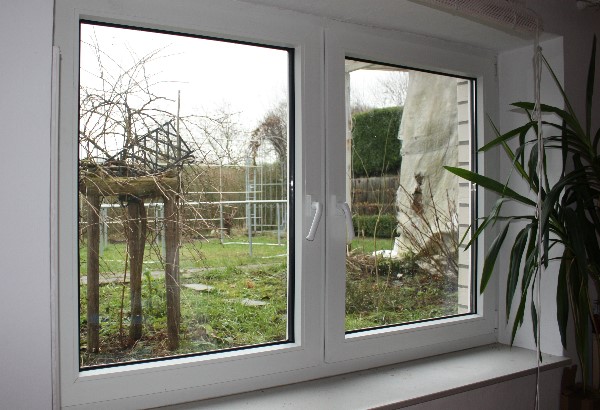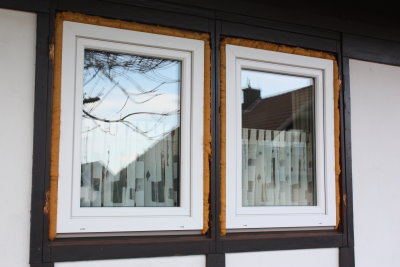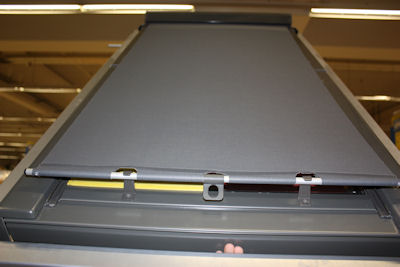U-value calculator for energy saving windows - Calculate Now
When designing interiors, creativity, individuality and professionalism are required. It does not matter whether it is about renovation work or even the new construction of a building. Particularly against the backdrop of energy saving, there are a number of factors that need to be taken into account when it comes to interior design.
The quality of the windows is of particular importance here. That's why you should have your windows and doors checked by an expert. After all, if you rely on quality right from the start, you will ultimately benefit twice over. The fact is that outdated or insufficiently insulated windows and doors can be real energy wasters and thus incalculable cost traps. But why should you literally throw your money out the window?

As is well known, windows are not only attributed a design or visual function. Rather, they contribute to an improved indoor climate, and they also play a very important role in terms of energy saving. Energy-saving windows, for example, help save twice as much as the "classic" laminated glass windows or the almost historical uncoated insulating glass windows.
Calculating the U-value
The so-called Uw value provides information on how much valuable energy is actually wasted. It is measured in watts per square millimeter Kelvin (W/m²K). The lower the Uw value, the better the respective thermal insulation properties. According to the current Energy Saving Ordinance, a Uw value of 1.3 W/m²K applies to new windows.
Compared to old insulating glass windows, which often have a Uw value of 3.0 (!), modern triple-insulated windows score with Uw values of around 1.0 or less. Even if the installation of energy-saving windows and doors is sometimes comparatively expensive, this cost often pays for itself after just a few months.
The lower the Uw value for doors and windows, the more you can save as a house or apartment owner in terms of heating costs. As a "rule of thumb" - experts advise - an annual savings potential of 400 to 450 euros is conceivable for a single-family house with a window area of 20 to 30 square meters. Another "highlight" in this context, by the way, are the attractive state subsidies or tax breaks!
Energy-saving windows
Beautiful windows are not only synonymous with beautiful living, but also with style, coziness and comfort. With regard to the design or the nature of a window, there are virtually no limits for the interested home builder. And also the selection is impressive in this regard.
Thus one has the "agony of choice" between the most different designs: single, double or triple glazed windows, windows made of wood, aluminum, plastic or high-grade steel, windows with special sound, sun, view or burglary protection as well as many other window systems. Those who want to benefit from high quality and at the same time save money should in any case opt for highly thermally insulated windows, among other things, to save on heating costs in the long term.
Variation aluminum windows
Modern aluminum windows are primarily characterized by their robustness as well as their high durability. In addition, the lightweight material is particularly convincing because of the wide range of design options. Plastic windows, on the other hand, score with their excellent sound and heat insulation, while high-quality offers with comprehensive sun and privacy protection are also available on the market. Windows made of resistant stainless steel are especially popular when an extraordinary static load capacity is required.
So especially for large-scale projects, stainless steel windows are the ideal solution. If, on the other hand, you prefer the classic option and want to give your house a "natural" look, robust energy-saving windows made of wood are exactly the right choice. Quite unlike many "predecessor" models, today's products are generally characterized by excellent weather resistance. Innovative processing methods make this possible. Well-designed combination window systems also enjoy popularity: the new wood-aluminum constructions not only look first-class, they also impress with very low maintenance and care requirements.
Whichever option you choose: especially when buying new windows, you should not save at the wrong end. Remember that high-quality windows can increase the value of a building in the long term. Not to mention the high energy-saving effect that most modern windows usually bring with them. Nevertheless, do not forget the fact that the next generation will also benefit from high-quality windows!
Installing windows after the calculation
When installing windows, professionalism and craftsmanship are required. In this context, an attractive appearance plays just as important a role as reliable sealing. When installing windows, there is always talk of the so-called RAL assembly. It is worth knowing that RAL in itself is not an assembly variant in the actual sense. Rather, it is merely the method of working in terms of monitoring the quality of the execution of the individual steps. However, it is interesting to note that only the certified members of the so-called RAL Quality Association are allowed to perform RAL assembly.

Windows are installed either with the aid of a fastening anchor or with the aid of so-called frame anchors. These are firmly connected to the masonry through the frame. However, it is essential to ensure that the window reveal is aligned straight beforehand! (The reveal is the vertical part of a (window) opening in the facade). However, before inserting the frames, it is necessary to position them on small blocks and carefully align them. If necessary, the installer applies a special sealing tape to prevent later penetration of cold and moisture in advance.
Tip: The previously inserted blocks do not have to be removed after the window has been installed, because the entire weight of the new windows will be borne by them later.
Speaking of weight: in order to be able to absorb the load or the acting forces and tensile stresses in the long term and, if possible, to transfer them directly into the masonry, so-called window lintels are used. A lintel can be made of wood, but also of steel or concrete. In any case, a window lintel is indispensable for the permanent compensation of the static compressive forces.
Once the frame is aligned in the desired position, the window sashes can be installed. Special (wooden or plastic) wedges help to insert and connect the components more easily and without problems. You should not forget to remove the wedges later! After removing these practical aids, the remaining cavities between the masonry and the frame must be filled with acrylic, silicone, construction foam or mineral wool. Which material is used in this regard is usually a matter of discretion.
Professional sealing is crucial during window installation when it comes to later, efficient thermal insulation/insulation.
Less expensive renovationwith window cost calculator
When the old windows have had their day after many years, new ones are needed. Especially if they no longer meet the guidelines of the current energy-saving regulations in terms of quality standards. In the case of old windows, there is sometimes a risk that components have warped or other signs of wear are visible.
It is equally fatal if the seals have become brittle and cracked over the years. Because this leads among other things to the fact that cold and dampness can penetrate and promote so if necessary a mold formation! But not only the health damages are massive in this respect, but also the continuously increasing energy expenses!
Instead of installing new windows, however, there is the alternative of upgrading or professionally refurbishing the existing windows. No matter how first-class the thermal insulation of the masonry (still) is: if the insulation at the windows shows deficits, it can become really expensive. This is because a great deal of valuable energy can leak out through the windows.
It makes sense, by the way, to always take a look at the thermal insulation as part of a window renovation. According to experts, this is because the previous, constant flow of air inside the premises is interrupted, but the moist air now no longer has the opportunity to escape. As a result, this can now settle as condensation on the facade and, in the worst case, even lead to mold growth - assuming insufficient room ventilation.
In order to save heating costs, it may be helpful to switch from conventional glazing to double-pane insulating glazing. This alone can reduce heat loss by more than half. If, on the other hand, you opt for triple-pane insulating glazing, around 80 to 85 percent less heat loss is possible. Homeowners who do not want to replace their windows but prefer to renovate them can benefit from attractive government subsidies.
Promising prospects, because depending on the scope, the cost of new windows is about 150 to 450 euros per square meter. A frequently used compromise solution are special insulating films, which are glued directly to the window frames on the inside. Such a film provides improved insulation and is therefore particularly suitable for windows with single glazing. A window renovation with a special pane is of higher quality. This can usually be applied to the frame without further ado. So why install new windows when modern renovation options can be just as efficient?
Topics: building & living, windows, window renovation, window construction, window calculation




